Storage of hatching eggs in the production process
Due to dynamic market demands for day old chicks and the large scale of commercial hatcheries, the storage of hatching eggs is often unavoidable.
Although the detrimental effects on hatchability and chick quality have been known for a long time, hatchery managers aim for an optimal utilisation of the considerable capacity of modern incubators and to minimise transports from farm to hatchery.
In this way, efficiency is optimised and costs are reduced. Even though managers are aware of the measures that can be taken to reduce damage, we noticed that difficulties arise as regards the implementation of these measures in hatchery practice. However, losses due to prolonged egg storage can be greatly reduced by the consistent application of these methods in the planning schedules of hatcheries.
Furthermore, results from recent studies reveal new aspects concerning the events that occur during storage.
What happens during egg storage?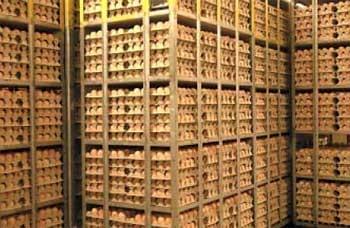
Despite the fact that it has been the subject of many reviews and investigations, the mechanisms that cause egg quality to decline as a result of storage are, to this day, still not clear. It is generally known that the albumen viscosity (albumen height) decreases and the albumen pH increases during storage (Fig. 1).
However, these changes in albumen do not simply designate the quality of a hatching egg in terms of its potential to generate a (healthy) chick. Egg quality is best at the day of lay and changes in albumen viscosity and pH occur mainly during the subsequent four days.
However, the highest hatchabilities are produced from eggs that have been stored for 1-2 days, and thus from eggs of ‘suboptimal’ albumen quality.
Results from recent investigations suggest that the embryo itself initiates the alterations in albumen characteristics, in this way apparently optimising its environment for incubation.
Fig. 1. Changes in pH and albumen height in the egg during storage. Values are based on
data from five studies using different breeds.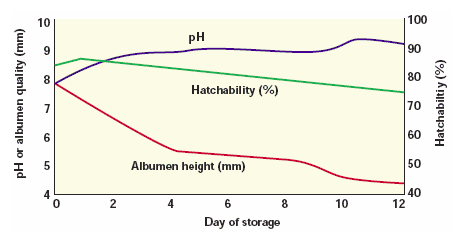
Effects on hatchability and quality
Although in hatchery practice storage is only considered harmful after prolonged storage durations (>7 days), negative effects are obvious from day two onward.
A Norwegian study (2001) on hatchability results from 112 commercial Ross 208 flocks revealed that the most important factor to influence hatchability was pre-incubation egg storage.
Hatchability percentages showed a linear decrease from day two onward, which was estimated to be 0.7% per
extra day of storage! Next to reduced hatchability outcomes, it is generally known that post hatch chick quality is depressed as a result of egg storage.
For example, in a recent study by the Katholieke Universiteit van Leuven (2004) in Belgium, a decline in growth
up to slaughter age was observed in Cobb chicks after storage periods of seven days. Chicks that hatched from
these eggs weighed over 200g less at 42 days compared to chicks that hatched from eggs stored for one day.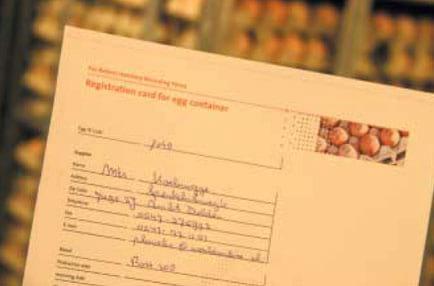
Records are the backbone of traceability.
Reducing the effects of storage
Although it is clear that pre-incubation storage of hatching eggs negatively affects hatchability and chick quality, it is inevitable in modern hatchery practice. However, the following measures provide useful tools to reduce the damage due to storage.
- Maternal age. Where there is an option, eggs from young maternal flocks should be stored rather than those from old flocks, since the decrease in hatchability after storage is greater in eggs from the latter (Fig. 2)
Fig. 2. Effects of flock age and days of storage.
- Storage temperature. After oviposition, the temperature inside the egg rapidly falls below the physiological zero, that is the minimum temperature above which embryonic development occurs. However, temperatures below this point influence other egg characteristics, thereby affecting egg quality depending on the duration of storage.
When eggs are destined to be stored up to a maximum of three days, the temperature should be 18-21°C. With storage periods of 4-7 days, eggs should be held between 15-18°C. When the storage
duration extends beyond seven days, a temperature of 10-12°C is recommended. - Relative humidity. Even though the optimum range of relative humidity is less strict compared to the temperature, it is important to realise that eggs may lose too much moisture when stored in low
humidity conditions. The danger of dehydration is especially present in eggs with thin or porous shells, such as those from old maternal flocks. Relative humidity during storage should be 70-80%.
Levels may be increased to 88% with eggs from old flocks or when eggs are destined to be stored for extended periods. - Egg turning. Research has revealed that the turning of eggs can restore hatchability levels after pre-incubation storage. Whereas more dated studies suggested that this method is only useful after extended storage durations, recent results (2002) using Ross 308 eggs indicate that the turning of eggs four times a day is rewarding for storage periods of seven days.
- Incubation duration. In stored eggs, not only is the initiation of embryonic development delayed but the rate of development is also lower. The incubation time should, therefore, be extended by one hour for every day of storage. In a 1980 study using Ross eggs, the decline in hatchability after storage was reduced by 0.6% per 40 minutes that were added for every storage day compared to the control eggs. For this measure, setting scheme plans have to be adjusted to storage times.
- Pre-incubation treatments. Studies have indicated that the pre-warming of eggs immediately prior to the start of incubation can reduce hatchability losses after storage. During this prewarming period, the temperature of various components of the egg becomes homogenous before the initiation of
incubation, which seems to lead to a more uniform early embryonic development. In these studies, eggs were warmed at 20-25°C for several hours (5-18 hours) just prior to incubation. However, effects
were only apparent after prolonged storage periods (more than 14 days). - Incubation temperature. Recent results from a study with turkey eggs demonstrated the positive effects of increasing the temperature during the first and second week of incubation on the hatchability of stored eggs. The effects of incubation temperature treatments in broiler eggs are currently being
studied at the R&D department of Pas Reform. The measures previously mentioned offer fairly easy tools to reduce losses in hatchability and chick quality after pre-incubation storage. In addition,
there are a number of methods In this position, the embryo seems to be better protected from dehydration and adhesion with the membranes, which results in better survival through storage.
No recent investigations into this method are known. - Pre-warming treatments at the farm. The temporary heating of eggs immediately after oviposition prior to storage has been shown to reduce losses in hatchability due to storage.
This treatment seems to advance embryonic development to a stage at which it is better able to withstand storage periods. In a recent study (2001) using eggs of commercial broiler breeders, the
pre-warming of hatching eggs at 37.5°C for a period of six hours increased the hatchabilities of stored
eggs relative to the control group. However, improvements were only demonstrated in eggs that had been stored for 14 days; in the eggs stored for four days no effect was observed. This method seems to be less suitable for eggs from old flocks, since these eggs contain embryos that are already in a more advanced stage at the moment of oviposition.
Application in hatchery practice
The methods summarised here can greatly reduce damage after storage.
However, implementation in hatchery practice is only effective when the measures are applied from the first storage day onward.
For example, to hold eggs at the optimum storage temperature, the duration of storage for every batch of eggs must be known beforehand.
Application in hatchery practice, therefore, requires good planning as regards setting schedules. The use of planning forms is indispensable in this particular respect (Fig. 3).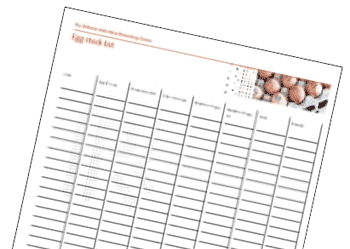

Fig. 3. Example of a planning form.
Table 1. Optimal conditions during hatching egg storage.
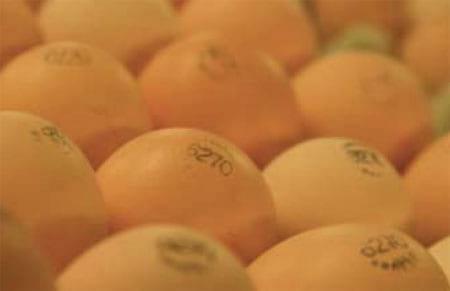
Did we store hatching eggs for more than 15 days? What will be the steps and precautions to be taken for long storage?








